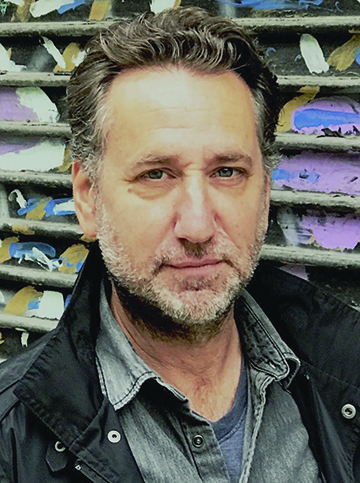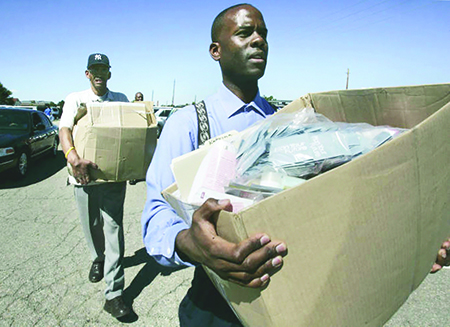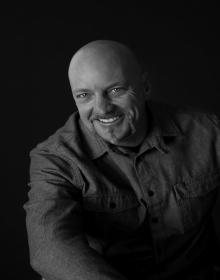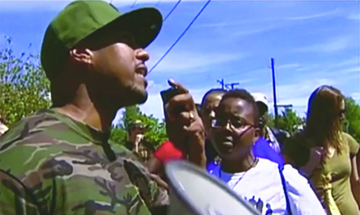“Courage is grace under pressure.” Ernest Hemmingway
Not since the heyday of Gonzo Journalism has a Colorado writer immersed themselves in a story to such a degree, they become temporarily synonymous with the subject of their investigation.
This level of dedication explains why author Julian Rubinstein is laying low. Because for now — he is responsible for introducing oblivious residents of the Mile High City and the world at large to “Invisible Denver.”
Rubinstein recently published a book titled The Holly — a factual, multi-generational account of people, events, and places in and around a specific sector of Northeast Denver. This residential and commercial district is home to a variety of small businesses, community centers, a library, post office, the Center for African American Health, and more, Holly Square is also the site of countless gang-related incidents and deadly encounters over the last 30+ years.
A Work In Progress
The area is well known for conflict between Denver gangs and the DPD. Yet, Holly Square also bears the fruits of the efforts of former gangster-turned activist Terrance Roberts and various philanthropists and community outreach groups. On the surface, there is evidence of an influx of big money bolstering new development such as the Nancy P. Anschutz Center/Boys & Girls Club which opened in 2013. This has a seemingly synergistic effect on long-established neighborhood institutions, namely the shops and businesses in the Park Hill Center. On a deeper level, however, linger the ghosts of a community long-affected by civic dysfunction and gang warfare.
The Promised Land
Beginning in the 1950s, Rubinstein reports, this area was the Plymouth Rock of a migrating African American populace fleeing the Jim Crow South in search of a better life. Among them was Terrence Roberts’ grandmother, Ernestine Boyd, who was soon followed by most of her immediate family — whom she managed to move to Denver one by one from an Arkansas cotton plantation. “Most people don’t associate Denver with having much of an African American population or culture,” Rubinstein begins. “But of course, there is a very strong one that begins very early,” he explains. The Holly is the de facto epicenter of what Rubinstein’s book reveals as “Invisible Denver” a subculture extending across multiple neighborhoods that most folks beyond the zip codes therein are unaware of.
The Story That Hit Home
The germ for The Holly was planted in 2013, when a national news piece caught Rubinstein’s attention (a Denver native) while he was living in New York City. It involved former Bloods gang member-turned anti-gang activist Terrance Roberts, who was involved in a shooting incident in Holly Square that nearly claimed the life of then-active Bloods gang member Hasan Jones.
Over the next seven years, Rubinstein would immerse himself in the subculture of The Holly. “I didn’t know what I was going to find, and I didn’t expect to find what I did,” he explains. “It ended up feeling like a responsibility that I didn’t always want.” The book is an opus driven by equal amounts journalistic curiosity, humanist compassion, and nerves of pure steel. He documents in great detail how he was able to gradually befriend Roberts, Roberts’ father George (a funeral preacher), and an extended network of characters who don’t normally associate with Caucasian journalists.
Dysfunction Junction
Perhaps the most disturbing set of circumstances Rubinstein uncovers are those demonstrating the monumental failure of Denver law enforcement to address and reverse the ongoing crisis of gang violence. His reporting reveals that active gang members were recruited by city-appointed officials and placed on payroll to perform “outreach” to the community’s at-risk youth. “For much of the time I felt like I was doing government oversight work,” Rubinstein explains. Rubinstein refers to this as the “urban war industrial complex,” and he demonstrates that as certain government-sponsored “anti-gang” programs were implemented, the violence only increased.
Internal Perspectives, Conflicting Opinions

Author: Julian Rubinstein is a Denver native who was compelled to return home and uncover the truth about “Invisible Denver.”
Rubinstein’s story presents a comprehensive, multi-generational account of local African American history, gang culture, activism, anti-activism, and urban development. Folks who want to get to know “Invisible Denver” can start by reading The Holly.
Like many journalists, Rubinstein is not without detractors. One such figure is Jeff S. Fard — founder of Brother Jeff’s Cultural Center, and a well-known figure in the Northeast Denver community. He is a lecturer, multimedia journalist, and community organizer. He is also a regular guest on a local radio show hosted by longtime Denver on-air personality Peter Boyles.
Brother Jeff’s outspoken criticism of Rubinstein on Boyles’ 710 AM KNUS radio show has brought more than a few questions to the fore. When asked about his ire toward Rubinstein’s reporting in The Holly, he replied with a litany of misreported facts such as incorrect ages, school attendance statuses, and gang affiliations, and more. Brother Jeff attests, “ If these basic facts are not correct, how much can larger facts be trusted?”
Infractions, Minor And Otherwise
Rubinstein has taken note of these oversights, and vows to correct them in future editions. “Well, thankfully these are minor infractions,” he explains.

Brother Jeff: While Brother Jeff credits Rubinstein with making some good points, he has far more critical bones to pick with The Holly.
Brother Jeff has bigger fish to fry. “Initially, I thought The Holly was a product of journalism and reporting,” he states. “It only took me a few pages … to realize the book is more of Terrance Roberts’ story as told to Julian Rubinstein. I have many questions for Julian. For example, does Roberts receive any royalty payments from the book? Was he paid? If so, that departs from any journalistic effort I am familiar with. I have been around Roberts long enough to hear his voice and tone in much of The Holly.
Brother Jeff continues his invective, “Flames burned down The Holly, and now, the opening of unresolved issues and wounds are tearing the community apart again. In fact, after 400 pages most walk about asking, what is that book all about?”
One of Rubinstein’s main revelations in The Holly is evidence of police corruption. Specifically, in the claims that active gang members are recruited by DPD and other official agencies to, ironically, work in the capacity of anti-gang outreach for at-risk youth. Rubinstein cites numerous sources and instances to support this claim, yet Brother Jeff has a different story to tell concerning this issue.
An Ongoing Debate
When asked about police corruption, as reported in The Holly, Brother Jeff states, “Initially, community and city collaborations regarding youth were done through a program known as Safe City. Mayor Webb placed this within the Manager of Safety office. That office is more than the police. It is Sheriff, fire, and even the Independent Monitor. Later GRID and Safe City kinda merged and Safe City became Safety Programs. This work is also under the Manager of Safety. I don’t know too much about police recruiting anyone from community based programs,” he explains. “They may have recruited confidential informants etc…, but no one I know would know anything about that.”
Meanwhile, Rubinstein denies having a partnership with Roberts, and is quick to defend his revelations about misappropriation of government funds for anti-gang, community outreach. “Because Brother Jeff didn’t hear of any DOJ funding doesn’t mean it wasn’t there,” he explains.
As with most polarized issues, the complaints are many and the grudges run deep — indicating the disputes arising from The Holly will smolder on. Which, alas, may help make Invisible Denver not so invisible.



